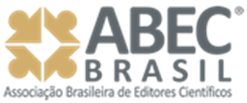Foliar pigments in tomato plants in response to water replenish-ment and silicon application
Keywords:
Elemento benéfico, Manejo hídrico, Solanum lycopersicumAbstract
Leaf pigments are related to the developmental conditions of plants, primarily reflecting stress conditions through the dynamics of chlorophyll and carotenoid contents in the leaves. Considering their functional roles in plants, leaf pigments also have an impact on crop yield. This study aims to analyze the influence of water management and silicon application on leaf pigments in tomato plants. The experiment was conducted in a protected environment using a completely randomized design in a 2×4 factorial scheme, with two levels of water replenishment (60% and 100% of crop evapotranspiration – ETc) and four silicon application methods (no application, total dose applied to the soil, split-dose soil application, and foliar application), with four replications. Leaf pigment determination was performed 75 days after seedling transplanting, using leaves from the upper third of the plants. Silicon application positively influenced the leaf pigment contents in tomato plants, especially under water deficit conditions.
Downloads
Published
How to Cite
Issue
Section
License
Direitos Autorais para artigos publicados nesta revista são cedidos pelo autor à Revista Campo Digital, que está autorizada a publicá-lo em meio impresso, digital, ou outro existente, sem retribuição financeira para os autores. Em virtude da aparecerem nesta revista de acesso público, os artigos são de uso gratuito, com atribuições próprias, em aplicações educacionais e não-comerciais.









 ISSN 1981-092X
ISSN 1981-092X
